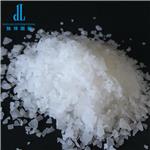Carbon Black: Driving Advances in Nanomaterial-Based Electrochemical Technologies
General Description
Carbon Black is a material rich in carbon nanostructures that has been successfully used as a modifier for electrochemical sensors. Carbon black can be added to a variety of materials to improve their physical, electrical or optical properties. It plays an important role in elastomers, plastics, coatings and inks as a reinforcing agent, black pigment and conductive material. But it is important to note that Carbon black is not black carbon.

Figure 1. Carbon Black
Carbon black vs Black carbon
Carbon black is a black particle in the form of a fine powder or granules containing more than 95% pure carbon. It is formed by high-temperature cracking of hydrocarbon feedstocks under strictly controlled process conditions. In the closed furnace black process for making carbon black (which is the main manufacturing process), preheated feedstock (usually oil separated from gasoline production), preheated air and gas enter a closed reactor and are partially burned at 1400-1800 °C. The carbon-rich product is quenched with water and then passed through a heat exchanger that preheats the combustion air. Varying the reactor temperature and/or residence time produces different grades of carbon black. Carbon black is odorless and is most widely used as a filler in the rubber, plastics, inks and coatings industries.
Black carbon is an undesirable carbonaceous byproduct of the incomplete combustion of fossil fuels and biomass. Anthropogenic sources of black carbon or soot include residential combustion sources such as oil furnaces, fireplaces, and wood stoves in developed countries, and simple stoves and open fires in developing countries. While carbon black is composed almost entirely of pure elemental carbon (>97%), black carbon or soot is a heterogeneous material consisting of less than 60% elemental carbon, a large amount of inorganic impurities (ash and metals), and a range of organic carbon species. The two are very different in composition and use, and therefore, should not be used interchangeably.
Electrochemical Properties and Applications of Carbon Black
In studying the electrochemical behavior of carbon black, reduction and oxidation waves are observed and attributed to charge transfer between the metal electrode and the surface functional groups on the carbon black. The electrochemical characterization of carbon black suspensions allows us to distinguish the presence of phenolic, quinone, carboxyl, and lactone groups. The intensity of each characteristic electrochemical wave reflects the concentration of these functional groups on the carbon surface, while the potential at which the redox process occurs reflects the energy state of these functional groups. It was also found that the electronegativity of carbon black depends on the concentration and energy of surface functional groups. Highly electronegative carbons exhibit reduction and oxidation waves at higher anodic potentials compared to electropositive carbons. Therefore, the work function of a given carbon is determined by the collective action of reducible and oxidizable surface groups that control the electronegativity of the carbon.
Several commonly used carbon black grades including N220, N234, N326, N330, N339, N375, N550, N660 and Lamp Black-101, as well as relatively newer grades Printex®-200, Printex® G, Printex® XE-2B and Printex® Zeta have been used in electrochemical sensors. The effect of coating a glassy carbon electrode with carbon black on the electrode performance was investigated by cyclic voltammetry using three redox probes: ferrocyanide (anionic probe molecule), ferrocenylmethanol (neutral) and hexaammineruthenium (cationic). Raman spectroscopic characterization of the different grades showed that those with superior electrode modifiers had a lower degree of graphitization. In general, modification increased the anodic peak current for the ferrocyanide probe; and decreased the anodic potential for the ferrocyanide and hexaamineruthenium probes. The increase in peak current and potential observed on ferrocenium methanol is consistent with the increased tendency of this probe to adsorb to the modified electrode surface. N330 and Printex® XE-2B exhibited the best electrocatalytic performance, i.e., enhanced peak current and decreased anodic overpotential for the redox probes. The CB grade was used to modify screen-printed carbon electrodes and the resulting sensors were examined for anodic detection of reduced nicotinamide adenine dinucleotide (NADH) cofactor by cyclic voltammetry. Printex® XE-2B significantly improved the detection of NADH and was further used for chronoamperometric NADH detection at low overpotential. The N220, N375, N550, and P-G grades showed their suitability as enzyme scaffolds for sensor fabrication as they retained the activity of NAD-dependent aldehyde dehydrogenase.
References:
[1] CHRISTOPHER M. LONG P A V Marc A Nascarella. Carbon black vs. black carbon and other airborne materials containing elemental carbon: Physical and chemical distinctions[J]. Environmental Pollution, 2013, 181: 1-344. DOI:10.1016/j.envpol.2013.06.009.[2] FABIANA ARDUINI . Carbon black as an outstanding and affordable nanomaterial for electrochemical (bio)sensor design[J]. Biosensors and Bioelectronics, 2020, 156. DOI:10.1016/j.bios.2020.112033.
You may like
Lastest Price from Carbon Black manufacturers

US $20.00-15.00/kg2025-04-21
- CAS:
- 1333-86-4
- Min. Order:
- 1kg
- Purity:
- 0.99
- Supply Ability:
- 5000 Ton

US $30.00-10.00/KG2025-04-15
- CAS:
- 1333-86-4
- Min. Order:
- 50KG
- Purity:
- 99%
- Supply Ability:
- 500000kg


